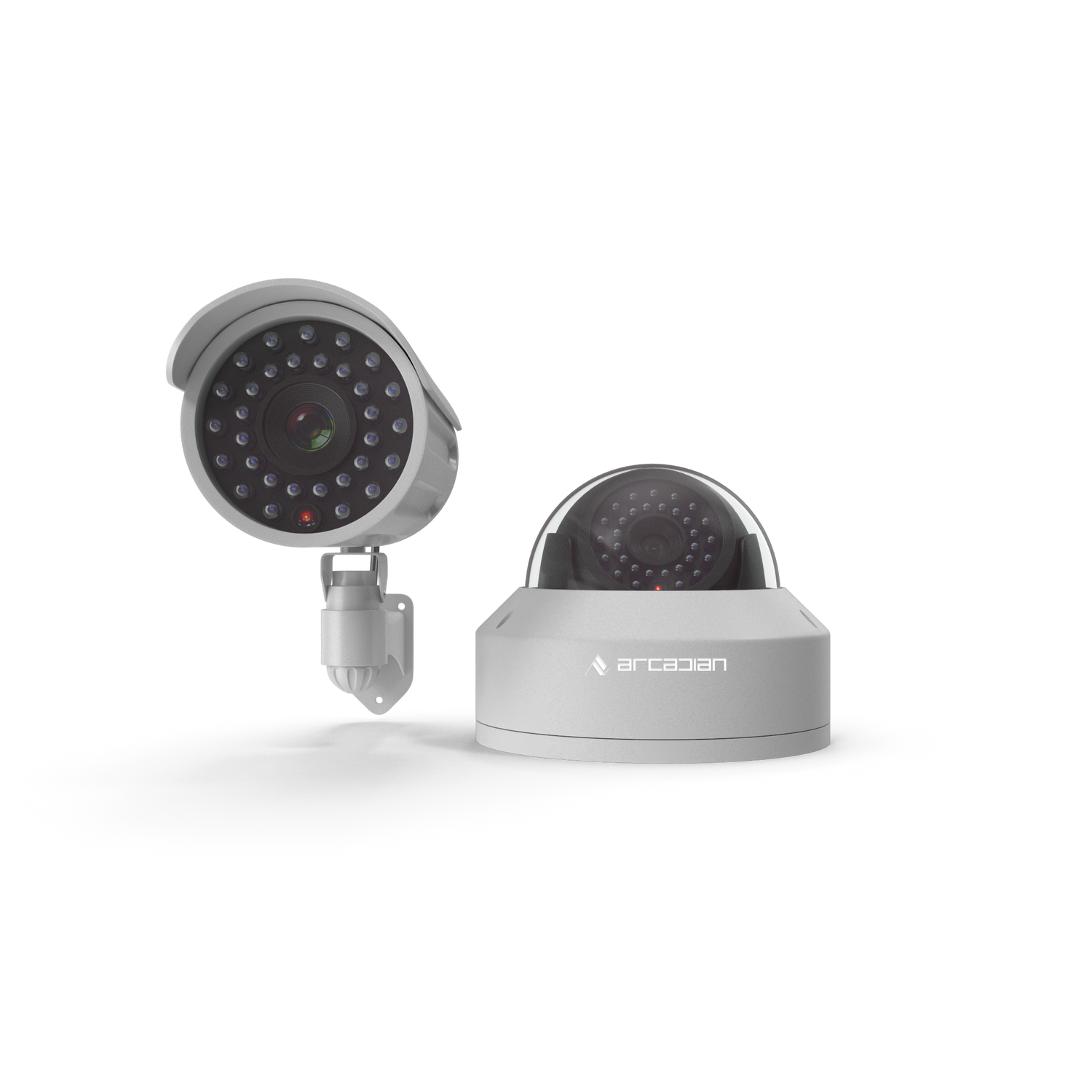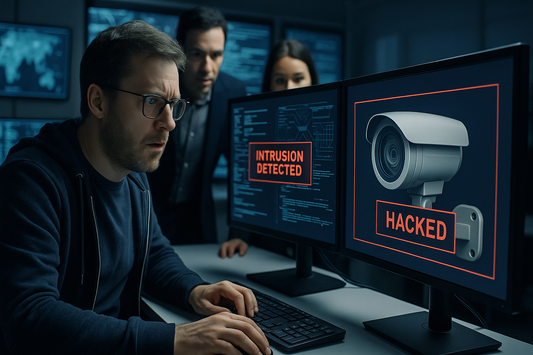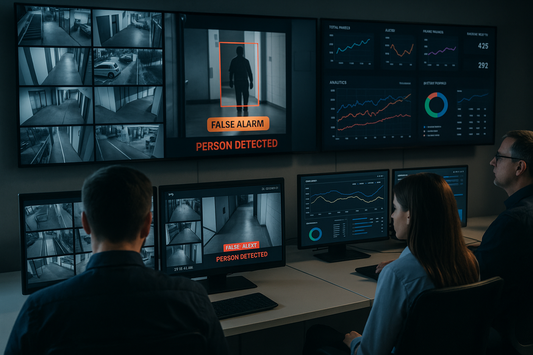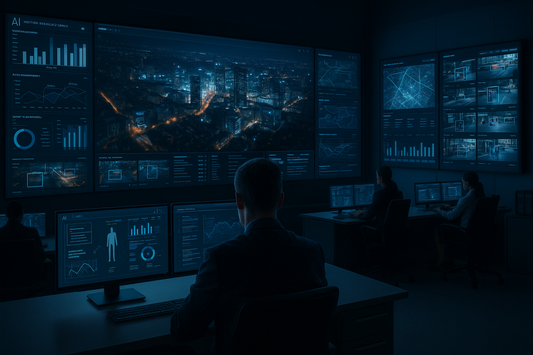Verkada vs Genetec vs Ranger: The Future of AI Security Platforms
In 2025, AI is redefining the surveillance industry. This in-depth report compares Verkada, Genetec, and Ranger by ArcadianAI — exposing strengths, weaknesses, and the architectural choices that will decide who leads the next decade of intelligent security.
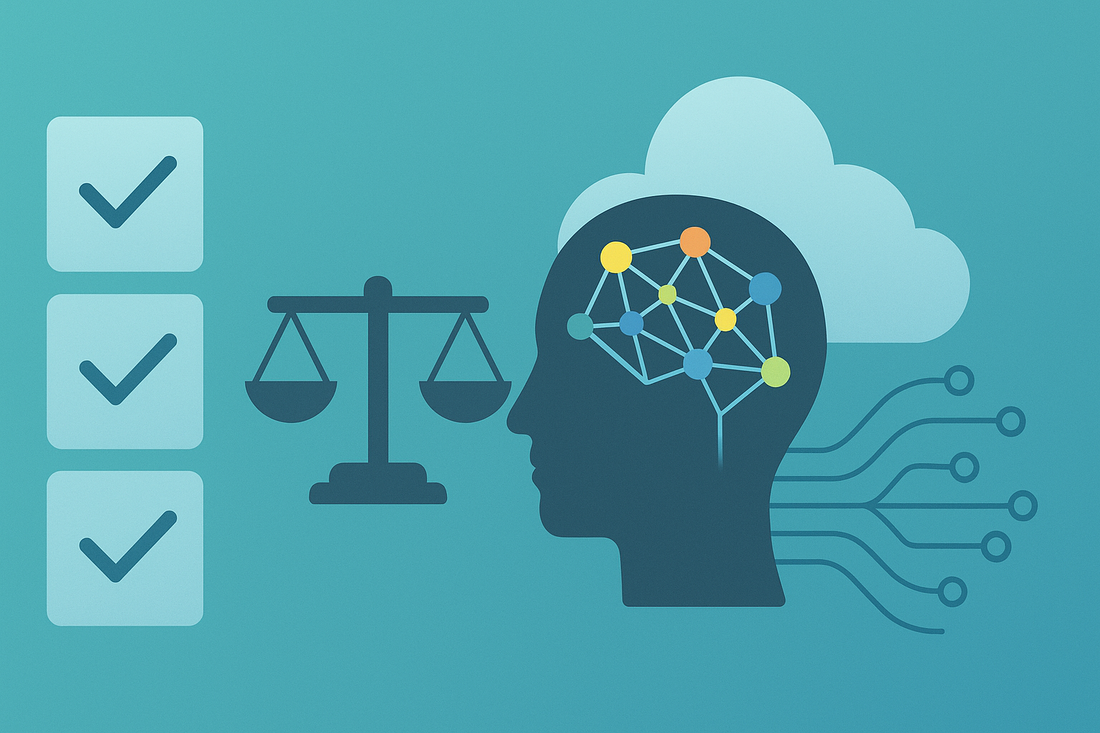
- Introduction
- Quick Summary / Key Takeaways
- Background: Why This Comparison Matters in 2025
- The Platforms at a Glance
- Architecture & System Design
- AI & Analytics Capabilities
- Deployment, Operations & Scalability
- Security, Compliance & Privacy
- Ecosystem & Integration
- Cost, ROI, and Business Model
- Adaptability & Future-Proofing
- Real-World Scenarios
- Competitive Overview Table
- Industry Compliance Snapshot
- FAQ
- Conclusion
- Security Glossary (2025 Edition)
- References
Introduction
Security has entered its intelligent era. What used to be static infrastructure — cameras, servers, DVRs — has become a dynamic ecosystem of AI, data, and decision-making. Organizations no longer buy “recorders”; they invest in platforms that think.
At the center of this transformation stand three names that represent three philosophies:
-
Genetec, the proven enterprise VMS giant.
-
Verkada, the integrated cloud challenger.
-
Ranger by ArcadianAI, the adaptive, sensor-agnostic AI platform built for the post-NVR age.
This isn’t another product comparison. It’s a look beneath the surface — into architecture, scalability, security, AI maturity, and strategic direction. Because in 2025 and beyond, the winner won’t be who sells the most cameras. It will be who builds the most adaptive brain behind them.
Quick Summary / Key Takeaways
-
Genetec = Enterprise stability, hybrid legacy power.
-
Verkada = Simplicity, fast deployment, vendor lock-in risk.
-
Ranger = Cloud-native intelligence, AI modularity, open ecosystem.
-
AI-driven, sensor-agnostic design defines the next decade of security.
-
Zero-trust, compliance, and adaptability will separate leaders from laggards.
Background: Why This Comparison Matters in 2025
The global security landscape is evolving faster than at any point in history. According to Future Market Insights (2025), the AI security platform market is set to surge from $3.5 billion in 2025 to over $25 billion by 2035 — a 22% CAGR. Traditional NVR/VMS models, built for fixed infrastructure, simply can’t keep up.
At the same time, 91% of enterprises plan to migrate at least part of their surveillance to cloud or hybrid architectures by 2026. This means the architecture you pick today determines your agility, compliance, and competitiveness tomorrow.
Verkada and Genetec represent the “yesterday and today” of security. Ranger by ArcadianAI represents the tomorrow — designed from scratch for the multi-sensor, multi-AI, zero-trust world.
The Platforms at a Glance
| Platform | Founded | Core Model | Architecture Type | Strengths | Limitations |
|---|---|---|---|---|---|
| Genetec | 1997 | Enterprise VMS + Access Control | Hybrid / On-Prem + Cloud Extensions | Scalability, Ecosystem, Integrator Network | Complex upgrades, slower AI evolution |
| Verkada | 2016 | Hardware + Cloud (Closed Ecosystem) | Fully Cloud-Native, Proprietary Stack | Ease of use, Unified UX | Lock-in, limited hardware choice |
| Ranger (ArcadianAI) | 2023 | SaaS + Sensor-Agnostic AI Platform | Cloud-Native, Modular Microservices | Flexibility, AI adaptability, Zero-trust design | Newer ecosystem, rapid expansion stage |
Architecture & System Design
Genetec
Genetec’s architecture was forged in the era of on-prem servers and later evolved toward hybrid. Its flagship platform, Security Center, connects video, access, ALPR, and analytics under one umbrella. It’s battle-tested in airports, campuses, and cities.
However, it carries monolithic roots — adding new analytics often requires additional compute or gateways. Genetec’s strength is control and reliability; its weakness is velocity.
Verkada
Verkada’s architecture is the opposite: cloud-first, hardware-integrated, and opinionated. Each camera is a mini-computer with local storage and AI inference that syncs with Verkada’s Command cloud. It’s seamless — until you want to integrate non-Verkada devices.
The trade-off for simplicity is freedom. Verkada’s closed ecosystem simplifies onboarding but constrains flexibility and future-proofing.
Ranger by ArcadianAI
Ranger was born cloud-native and built for the AI era. It’s sensor-agnostic, microservice-based, and future-proof.
Each function — ingestion, AI inference, orchestration, analytics, compliance — runs as an independent service. The result: you can add or replace components (models, sensors, workflows) without re-architecting. Ranger treats hardware as a commodity, intelligence as the core, and adaptability as the default.
Verdict:
-
Genetec = proven but rigid
-
Verkada = elegant but closed
-
Ranger = flexible, modular, and built for continuous AI evolution
AI & Analytics Capabilities
Genetec
Genetec integrates analytic modules such as motion, loitering, line-crossing, and license plate recognition. It also supports third-party integrations (BriefCam, KiwiVision, etc.).
However, most analytics are bolt-ons, not core components. Deploying new AI often means scaling infrastructure — not just updating software.
Verkada
Verkada embeds AI into its cameras and cloud. Its selling point: everything “just works.” AI detects vehicles, people, motion, or loitering with minimal setup.
The limitation: its models are fixed. You get what Verkada ships. You can’t train or customize behavior models for your unique environment — a growing concern for enterprises needing contextual AI.
Ranger by ArcadianAI
Ranger’s entire pipeline is AI-first. It supports hybrid inference (edge + cloud), contextual understanding, and ensemble learning.
Key differentiators:
-
Contextual multi-camera reasoning (cross-view understanding)
-
Scene-aware analytics that reduce false alarms
-
Modular AI plug-ins (swap models without downtime)
-
On-the-fly updates using ArcadianAI’s continuous learning loop
-
Explainable AI: human-readable justifications for every alert
Ranger is not just detecting — it’s understanding.
Verdict:
Ranger wins on adaptability and precision; Genetec and Verkada offer strong but fixed analytic models.
Deployment, Operations & Scalability
Genetec
Large integrators love Genetec for its robust tools and configuration options. But deployments can be complex, requiring IT specialists, network tuning, and maintenance contracts. Scaling between sites means coordinating multiple layers of software and hardware.
Verkada
Verkada is the definition of convenience: plug cameras in, log into the Command dashboard, and you’re live. It auto-updates firmware and maintains health visibility. But multi-site scaling can expose its limits — bandwidth, licensing, and per-device costs add up.
Ranger by ArcadianAI
Ranger combines the simplicity of Verkada with the scale of Genetec. Its onboarding system is cloud-orchestrated — add a site, connect existing cameras (any brand), and Ranger configures the AI pipelines automatically.
Through ArcadianAI’s Bridge technology, customers connect NVRs or IP cameras securely without port forwarding or VPNs, maintaining SOC 2-aligned practices. Ranger scales from 10 to 10,000 cameras with no rework.
Verdict:
Ranger matches Verkada’s ease and Genetec’s enterprise reach — minus the rigidity.
Security, Compliance & Privacy
Security is where the next decade of surveillance will be won or lost.
Genetec
Genetec’s Security Score framework and strong role-based access controls set an industry benchmark. It supports encryption, audit trails, and detailed policy management. However, its hybrid approach means risk exposure depends on customer IT hygiene.
Verkada
Verkada’s infrastructure is secure by design — encrypted streams, two-factor authentication, SSO. Yet in 2021, a breach exposed 150,000 camera feeds across hospitals and factories, highlighting the danger of centralized credentials.
Verkada recovered and improved, but the incident remains a cautionary tale about control vs convenience.
Ranger by ArcadianAI
ArcadianAI built Ranger under a zero-trust philosophy. Every component — camera, edge node, user, API — is verified continuously.
-
Data encrypted at rest and in transit (TLS 1.3+)
-
Per-site encryption keys, zero-knowledge architecture
-
Built-in anonymization (faces, plates) and audit-ready redaction
-
Compliance with NDAA, GDPR, CCPA, and PIPEDA
-
SOC 2 and ISO 27001 alignment for enterprise assurance
Ranger isn’t “secure by promise” — it’s secure by architecture.
Ecosystem & Integration
| Aspect | Genetec | Verkada | Ranger (ArcadianAI) |
|---|---|---|---|
| Ecosystem | Broad, integrator-driven | Closed, proprietary | Open APIs, SDKs, plug-in marketplace |
| Hardware Support | Wide, ONVIF compatible | Verkada only | Any ONVIF/RTSP camera, sensor-agnostic |
| Third-Party AI | Supported via SDK | Limited | Natively modular |
| Community / Partners | Established integrators | Limited | Expanding ecosystem (Immix, RSPNDR, SureView) |
ArcadianAI’s open-platform philosophy encourages an AI marketplace where partners can deploy their own modules. This breaks the dependency cycle of “vendor dictates capability.”
Cost, ROI, and Business Model
Genetec
License-based, perpetual or subscription. Integration projects often run into six figures for multi-site enterprises. ROI is predictable but long-term TCO (Total Cost of Ownership) can rise with maintenance and hardware refresh cycles.
Verkada
Hardware subscription model (camera + cloud license). Simple pricing — but inflexible. You pay per camera, per year. Replacing hardware means new licenses, and leaving Verkada means losing access to your stored video.
Ranger by ArcadianAI
ArcadianAI’s SaaS model decouples cost from hardware. You pay for analytics, not devices.
-
No forced hardware upgrades
-
Consumption-based billing (compute, storage, analytics)
-
Multi-site consolidation reduces monitoring and insurance costs
-
Fast ROI through false alarm reduction (up to 90%) and improved response
Verdict:
Ranger optimizes operational expenditure while protecting future flexibility.
Adaptability & Future-Proofing
Ranger’s architecture is intentionally future-compatible.
-
Ready for multi-modal fusion (vision, acoustic, thermal, radar)
-
Supports AI model updates without downtime
-
Prepared for generative AI and vision transformers
-
Integrates LLM-based query (Ranger Chat) for forensic search across video archives
Verkada and Genetec will both adapt — but only Ranger was built for change as a core design principle.
Real-World Scenarios
Retail Chain
-
Genetec: Strong integration potential but high overhead.
-
Verkada: Quick setup, but replacing existing cameras inflates CapEx.
-
Ranger: Integrates legacy hardware, provides adaptive AI per location, lowers shrinkage, improves staff safety.
Smart City
-
Genetec: Established player with proven civic deployments.
-
Verkada: Limited due to closed architecture.
-
Ranger: Modular microservices handle thousands of edge nodes and AI tasks, enabling scalable analytics across districts.
Industrial Sites
-
Genetec: Reliable but complex.
-
Verkada: Plug-and-play not suited for industrial ruggedness.
-
Ranger: Edge-ready, supports solar/mobile sites, integrates environmental sensors for safety and compliance.
Competitive Overview Table
| Criteria | Genetec | Verkada | Ranger (ArcadianAI) |
|---|---|---|---|
| Architecture | Legacy hybrid | Closed cloud stack | Modular, microservice, AI-native |
| Scalability | High (enterprise) | Moderate (hardware-bound) | Elastic horizontal scaling |
| AI Adaptability | Medium (plug-ins) | Low (fixed models) | High (modular, updatable) |
| Ecosystem Openness | High | Low | High |
| Security Posture | Mature | Improved after breach | Zero-trust by design |
| Cost Structure | License-heavy | Subscription-hardware | SaaS, consumption-based |
| Future-Readiness | Moderate | Limited | Excellent |
Industry Compliance Snapshot
| Regulation | Genetec | Verkada | Ranger (ArcadianAI) |
|---|---|---|---|
| NDAA Section 889 | Compliant | Compliant | Fully compliant; hardware-agnostic |
| GDPR / CCPA | Supported | Supported | Native anonymization + audit |
| SOC 2 / ISO 27001 | Enterprise optional | Claimed cloud controls | Built-in alignment |
| Zero-Trust Model | Partial | Partial | Core architecture principle |
FAQ
Q: Can Ranger integrate with my existing NVR or IP cameras?
Yes. Ranger connects through ArcadianAI’s secure Bridge or RTSP/ONVIF streams — no port forwarding, no VPNs required.
Q: How does Ranger reduce false alarms compared to others?
Through contextual multi-camera analysis and scene understanding, eliminating up to 90% of false events before alerting.
Q: What makes Ranger’s AI “context-aware”?
It interprets scene relationships — time, movement, behavior — rather than just detecting objects.
Q: Does Ranger meet enterprise cybersecurity standards?
Yes. It aligns with SOC 2, ISO 27001, and NDAA compliance standards with encrypted data paths and zero-trust segmentation.
Q: Is Ranger cloud-only?
No. It’s hybrid by design. Critical inference can run at the edge, while deeper analytics live in the cloud.
Q: What happens if internet drops?
Edge inference continues locally, buffering alerts until connectivity restores — no data loss.
Q: Does ArcadianAI provide APIs for integration?
Yes. Full REST and WebSocket APIs, plus SDKs for partner AI modules and integrations (Immix, SureView, RSPNDR).
Conclusion
Verkada, Genetec, and Ranger by ArcadianAI each represent an era of security evolution.
-
Genetec — the enterprise legacy system built for stability.
-
Verkada — the disruptor that simplified security through integration.
-
Ranger (ArcadianAI) — the intelligent successor built for adaptability, privacy, and open AI innovation.
The next decade belongs to platforms that understand rather than merely record.
Ranger is not just another VSaaS — it’s the foundation of adaptive, zero-trust, AI-powered security for a multi-sensor world.
Security Glossary (2025 Edition)
-
AI Alerts — Automated notifications generated by machine learning models when predefined behaviors or anomalies occur.
-
Anonymization — Removing or masking identifiable features in video (faces, plates) to ensure privacy compliance.
-
Bridge (ArcadianAI) — Secure gateway enabling camera onboarding without port forwarding or VPNs.
-
Camera-Agnostic — Compatibility with any IP camera or sensor regardless of manufacturer.
-
Cloud-Native — Architecture designed for scalability, redundancy, and continuous deployment in the cloud.
-
Edge Inference — Running AI locally at the camera or gateway for low-latency analytics.
-
Ensemble Model — Combining multiple AI models for higher accuracy and robustness.
-
False Alarm Suppression — Process of filtering noise or irrelevant detections to improve response efficiency.
-
Hybrid Architecture — Split workload between on-prem and cloud systems for resilience.
-
Microservices — Independent functional units that compose a scalable application.
-
NDAA Compliance — Adherence to the U.S. National Defense Authorization Act restricting non-compliant hardware.
-
ONVIF — Open Network Video Interface Forum standard for camera interoperability.
-
RBAC (Role-Based Access Control) — Assigning permissions based on defined user roles.
-
Sensor-Agnostic — Ability to support any sensor type (video, radar, thermal, acoustic) under one platform.
-
SOC 2 — Security compliance framework governing cloud service integrity.
-
TLS 1.3 — Modern encryption standard for secure data transmission.
-
VSaaS (Video Surveillance as a Service) — Cloud-based model delivering video storage and analytics.
-
Zero-Knowledge Encryption — Data encrypted end-to-end without vendor visibility.
-
Zero-Trust Architecture — Continuous authentication model assuming no implicit trust in any component.
-
Zonal Intelligence — Ranger feature analyzing context across multiple cameras and spatial zones.
References
-
Future Market Insights. (2025). AI Security Platforms Market Forecast 2025–2035.
-
The Business Research Company. (2025). Security Solutions Global Market Report.
-
Fortune Business Insights. (2025). Cybersecurity Market Report 2025–2032.
-
Verkada. (2025). Enhancing Your Security Infrastructure with Verkada’s Integration Network.
-
International Security Journal. (2025). Genetec Leads Global Video Surveillance Market.
-
TechRadar Pro. (2025). Security Tool Bloat: The New Breach Vector.
-
Wikipedia. (2021). Verkada Data Breach.
-
ArcadianAI Internal Documentation. (2025). Ranger Platform Architecture Overview.

Security is like insurance—until you need it, you don’t think about it.
But when something goes wrong? Break-ins, theft, liability claims—suddenly, it’s all you think about.
ArcadianAI upgrades your security to the AI era—no new hardware, no sky-high costs, just smart protection that works.
→ Stop security incidents before they happen
→ Cut security costs without cutting corners
→ Run your business without the worry
Because the best security isn’t reactive—it’s proactive.
